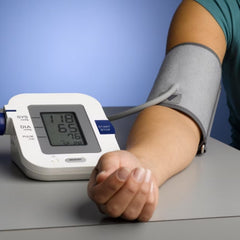The Hidden Dangers of Elevated Triglycerides: Beyond Fatty Liver—Pancreatitis and Cardiovascular Disease at Risk
Table of Contents:
- Avoiding These 4 Dietary Triggers Can Effectively Lower Triglyceride Levels
- Elevated Triglycerides Can Disrupt Whole-Body Metabolism
- Non-Alcoholic Fatty Liver Disease (NAFLD)
- Obesity and Diabetes
- Acute Pancreatitis
- Chronic Kidney Disease (CKD)
- Cardiovascular Disease
- How to Prevent and Manage High Triglyceride Levels
- FAQs about Triglycerides
Triglycerides are essentially fats found in the bloodstream. The oils we commonly consume—whether plant-based or animal-derived—are forms of triglycerides. When triglyceride levels in the body rise excessively, they can trigger a series of health issues such as hypertension, atherosclerosis, and hepatitis. If a routine health check reveals elevated triglycerides, dietary adjustments should be the first line of intervention.

Avoiding These 4 Dietary Triggers Can Effectively Lower Triglyceride Levels
For most individuals, elevated triglycerides stem from excessive calorie intake coupled with a sedentary lifestyle. When calories aren't burned off, the liver converts the surplus into triglycerides, which are then transported through the bloodstream and stored in various parts of the body. This leads to high triglyceride concentrations in the blood.
Harmful Fats
A common misconception is that all fats should be avoided when blood lipid levels are high. In reality, the focus should be on reducing unhealthy fats while incorporating healthy fats in moderation.
Unhealthy fats primarily refer to saturated fats found in red meat, processed meats, and deep-fried or pan-fried foods. These items often contain trans fats and saturated fatty acids that negatively impact lipid metabolism.
Conversely, healthy fats—such as those found in nuts, deep-sea fish, and olive oil—are rich in omega-3 polyunsaturated fatty acids. These beneficial fats activate enzymes that break down triglycerides directly in the bloodstream.
Fructose
Many people cut out oil and meat but continue to consume sugary beverages like bubble tea and fruit juices. These drinks are rich in fructose, which has an even greater impact on triglyceride levels than dietary fats. Excessive fructose intake prompts the liver to rapidly synthesize triglycerides, leading to fatty liver and potentially metabolic syndrome.
It is recommended to limit sugar intake to no more than 25 grams per day. Sugar-sweetened beverages should be restricted to no more than one small bottle (200–350 mL) per week.
Alcohol
Alcohol significantly disrupts metabolic processes. Even a small glass of alcohol contains considerable calories and stimulates the liver to produce more triglycerides.
Studies have shown that consuming 100 grams of alcohol per week is associated with a 0.41 mmol/L increase in blood triglyceride levels. Among regular drinkers, the prevalence of hypertriglyceridemia reaches 27.4%.
Refined Carbohydrates
Modern diets are often low in whole grains and high in refined carbohydrates, causing postprandial blood glucose levels to fluctuate dramatically. This impairs lipid metabolism and prompts the liver to produce more triglycerides.
Elevated Triglycerides Can Disrupt Whole-Body Metabolism
Blood lipids encompass both cholesterol and triglycerides. Compared to hypercholesterolemia, hypertriglyceridemia has broader systemic implications and is closely linked to various diseases.
Under normal conditions, triglyceride levels should be below 1.7 mmol/L. Levels between 1.8 and 2.2 mmol/L are considered borderline, 2.3 to 5.6 mmol/L as moderately elevated, and above 5.7 mmol/L as severely elevated.
Non-Alcoholic Fatty Liver Disease (NAFLD)
One of the key mechanisms in the development of NAFLD is the gradual deposition of triglycerides in liver cells.
Obesity and Diabetes
Up to 50% of overweight or obese individuals present with elevated triglycerides.
Obesity is often accompanied by hyperinsulinemia and insulin resistance.
Acute Pancreatitis
Hypertriglyceridemia increases free fatty acid levels around the pancreas, altering pH and the local microenvironment. This leads to microcirculatory disorders, inflammation, calcium overload, and ultimately acute pancreatitis.
Chronic Kidney Disease (CKD)
Although elevated triglycerides are not a direct cause of CKD, they often coexist. The prevalence of hypertriglyceridemia among CKD patients is as high as 44.4%.
Cardiovascular Disease
While triglycerides alone may not directly cause atherosclerosis, triglyceride-rich lipoproteins play a role in plaque formation and vascular inflammation, contributing to cardiovascular risk.
How to Prevent and Manage High Triglyceride Levels
Lifestyle modification and treating underlying conditions are the cornerstones of managing hypertriglyceridemia.
- In addition to dietary changes, regular physical activity helps accelerate triglyceride breakdown. It is recommended to engage in at least 150 minutes of moderate-intensity aerobic exercise per week, such as brisk walking, jogging, or cycling, ideally 3–5 times weekly.
- Individuals with diabetes, hypothyroidism, insulin resistance, or impaired renal function are at higher risk of elevated triglyceride levels. Routine health screenings and adherence to prescribed medications are crucial.
Management strategies vary depending on the severity of triglyceride elevation:
-
Mild to Moderate Elevation (1.7–5.7 mmol/L): After excluding secondary causes, lifestyle modification should be the first approach. For patients with high cardiovascular risk, pharmacological interventions such as statins, omega-3 fatty acids, or fibrates may be considered.
-
Severe Elevation (>5.7 mmol/L): Beyond lifestyle changes, the primary treatment goal is to prevent acute pancreatitis. Fibrates and/or omega-3 fatty acids are recommended.
In conclusion, hypertriglyceridemia is a chronic condition that requires sustained lifestyle interventions and, when necessary, long-term pharmacologic management to mitigate its health risks.
FAQs about Triglycerides
Can Fish Oil Lower Triglycerides?
Yes, fish oil can help lower triglyceride levels. It contains omega-3 fatty acids, specifically EPA (eicosapentaenoic acid) and DHA (docosahexaenoic acid), which have been shown to reduce triglyceride production in the liver. Regular intake of fish oil supplements or omega-3-rich foods may lead to significant improvements in blood lipid profiles.
Can Statins Lower Triglycerides?
Yes, all statins can effectively lower triglyceride levels. While their primary role is to reduce LDL cholesterol, statins also help decrease triglycerides, especially in people with elevated levels.
Is Cholesterol a Triglyceride?
No, cholesterol is not a triglyceride. While both are types of lipids found in the blood, they have different structures and functions. Cholesterol is a waxy, fat-like substance that is essential for building cells and producing hormones. Triglycerides, on the other hand, are a type of fat that stores unused calories and provides energy.
Do Eggs Raise Triglycerides?
Current research suggests that eggs do not raise triglyceride levels or worsen lipid profiles. In fact, moderate egg consumption has been shown to have a neutral or even beneficial effect on heart health for most people, especially when part of a balanced diet.
Does Applesauce Help Lower Triglycerides?
Yes, applesauce can help lower triglyceride levels. It is rich in dietary fiber and antioxidants, especially when made without added sugars. The pectin in apples helps reduce fat absorption in the body, while the natural sugars in unsweetened applesauce have a lower glycemic impact, supporting better lipid metabolism.





